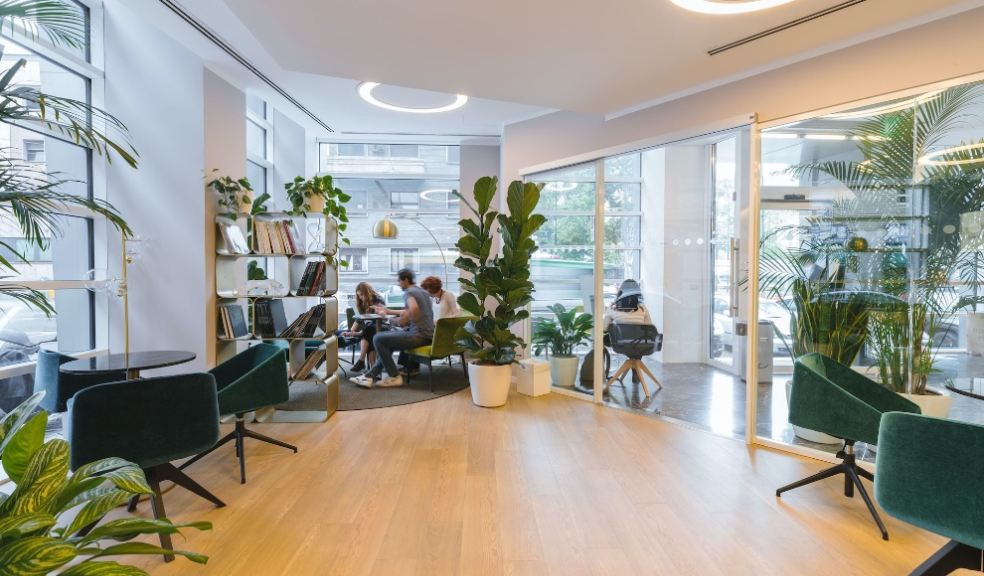
How to Incorporate Circular Economy Principles into your Office Design
The circular economy represents a shift from the traditional, linear economic model, based on the take-make-dispose pattern that counts on affordable, easily accessible materials and energy. It’s based on the idea that materials and products that can be designed to last longer, be repaired, refurbished, or recycled, positively impacting the planet and people. When something reaches the end of its life, its materials are kept within the economy wherever possible owing to recycling; it can be done time and time again, creating future value. More and more companies are considering the circular economy, reducing their environmental footprint, trimming operational waste, and managing resources more efficiently.
The circular office applies the principles of the circular economy to physical workspaces, retaining the maximum possible value of resources for as long as possible. It’s a change in mindset, believing that climate change is a chance to create a more sustainable future. With a circular perspective, you can drive your business to adopt more feasible practices and promote growth. In what follows, we’ll present a few suggestions on incorporating circular design principles into your project, equipping you with the knowledge you need to contribute to a more resource-efficient future.
Bring Nature into The Office to Boost Morale and Productivity
One way you can create a circular office while also exploring evidence-based design is by bringing a little bit of nature into the office. Greens have been found to clean the air, help with allergies, improve sleep quality, and promote mental health. Plants play an important part in transitioning to a circular office design, so give employees ready access to green spaces during the workdays. The stems, leaves, branches, wood, and so on absorb sound, so you can add peace, quiet, and productivity to your workday. Nature-inspired photos, such as landscapes or seascape photographs on the wall, can improve employee happiness and productivity.
People are more productive, concentrated, and, above all, more efficient when working in areas that receive natural light. Light has an impact that is environmental, economic, and cultural. Since we spend most of our time indoors, it’s difficult, if not impossible, to experience the benefits of natural light, as we’re not getting enough of it. Brighter is better, so maximise natural light in the office space by eliminating curtains, window blinds, and furniture, giving workers the desirable window seats, and putting in a skylight, to name a few. Drive away darkness all day long, reducing the need for artificial light and improving the ambience of your space.
Opt For Sustainable, Recyclable, Or Reusable Materials
If you want to transform your office into an eco-friendly haven, take advantage of natural and renewable materials for the walls, floors, ceilings, and, of course, furniture. Vepa, a successful name in the field of office furnishings, has long embedded sustainability and social responsibility in its corporate actions, striving for a better environment. New, high-quality material is extracted from waste products to create designs that allow people to work with pride and satisfaction. As you do your best to minimise your environmental footprint, one area that gets overlooked is office furniture. By selecting furniture that’s durable, modular, and adaptable, you can help create a fairer and more sustainable world.
Co-creation is one of the best ways to maximise your circular economy efforts, contributing to climate neutrality, resilience, and global sustainability. Having a standard solution isn’t always enough to win, so co-creation ensures the furnishings perfectly fit your needs, making the best possible contribution to the well-being of your working environment. The co-creation approach offers the opportunity to capture individual requirements flexibly and cost-effectively, translating them into ideas and designs. Vepa engages customers, pinpoints their needs, and gets them involved from the early stage of the development process. If you’re curious to find out more, please visit https://vepa.co.uk/.
Spaces Should Be Designed with Easy Deconstruction in Mind
In the old days, volumes and materials were directly and indirectly selected based on how they affected the building’s function, appearance, and maintenance. At present, buildings have a low embodied energy, being deconstructed or disassembled to eliminate waste or minimise the waste stream. You can incorporate modular furniture into the office design, as it can be reused and reconfigured to create the ideal working space. A well-considered selective dismantlement of components ensures future reuse, repurposing, and recycling, meaning it’s a sustainable solution to enhancing reusability elsewhere at the end of life.
Support Local and Social Enterprises That Align with Your Values
Last but certainly not least, it’s recommended to support small and local businesses that have the same sustainability goals and values as you. These enterprises are usually embedded within their communities and have the ability to influence behaviours and attitudes, representing a catalyst for sustainable change. You can acquire materials or supplies from cooperatives, local artisans, or social enterprises that leverage recycled and renewable resources, vastly better than using raw materials. The impact of collaborations on your journey toward a circular economy and sustainable future, serving as crucial nodes within the larger network.
Equally, you can hire local contractors, consultants, and designers who have in-depth knowledge of the circular economy principles and applications. You’ll find out how the circular economy is deployed in the real world, getting closer to reducing your environmental impact. Collaboration is of the essence for stakeholders such as architects, designers, constructors, and suppliers, to mention a few, as they can drive positive change. Decision-making seeks to design out waste completely, so the lifecycle of products and materials must be considered from the very get-go. Work with others to discover new products that help eliminate waste or support effective recycling.
Conclusion
Making the move to a more circular office is a good point of departure if you have your mind set on optimising and improving your resources’ efficiency to ensure business continuity. Collaboration is a crucial part of implementing the circular economy in any business, regardless of the industry type and business activities, so optimise the flow in the supply chain and between sectors. It’s critical to understand who you need on board to be successful.











